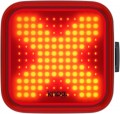Visibility of flashing
The distance at which the flasher (see "Type") remains visible. This is one of the key parameters for this type of lamps, because. flashers were originally designed to be used as signaling devices for others. However, it is worth noting that manufacturers indicate “perfect” visibility indicators in the specifications, while real ones can be noticeably lower — for example, in a dense traffic in the light of city lights, even a flashing lamp will not attract attention as much as on an unlit country road at night. Therefore, it is worth evaluating this indicator with a significant adjustment for the described difference.
Operating modes
The number of operating modes provided in the flasher (see "Type").
The presence of two modes, usually, means the ability to work in constant light mode — in some cases this format is considered more preferable (although the blinking is still more noticeable). And if there are more than two modes, then the flasher also provides more specific options (for example, “running lights”).
Operating time
Operating time of the flasher (see "Type") without replacing or recharging the battery. Usually, it is indicated for the flashing mode, because the flasher is extremely rarely used in constant light mode, its main purpose is flickering modes.
This parameter is quite approximate, because. the actual operating time will depend on the frequency and modes of use, air temperature, quality of replaceable batteries (see "Power") and other factors. Nevertheless, the operating time stated in the characteristics makes it possible to evaluate the battery life of flashing lights and compare them with each other.

